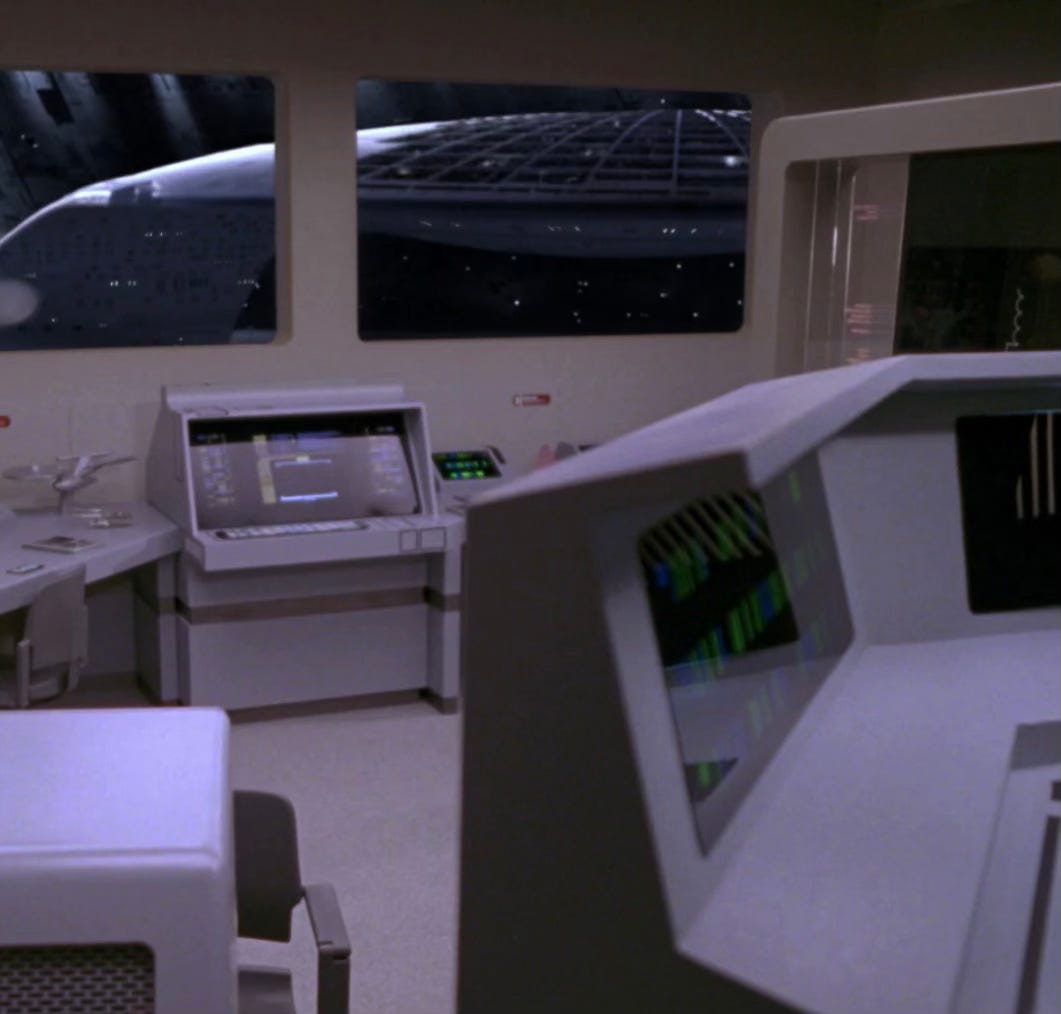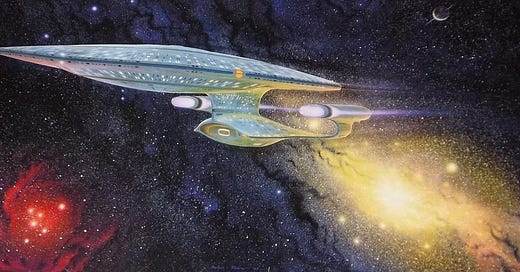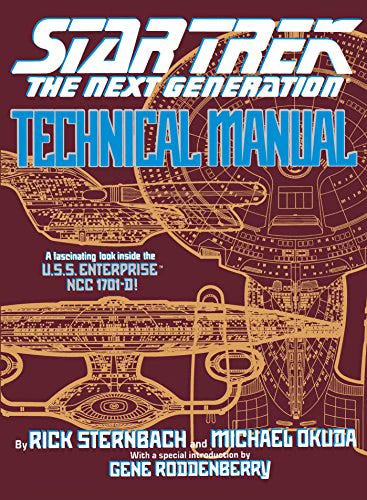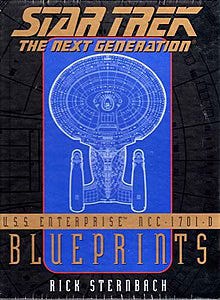You can read the about page for specifics and a short direct version.
This personal project has been a long time coming, in fact, over twenty-five years. For many years, I, like so many Star Trek fans, have loved, scrutinised, criticised and debated the fine line between science fiction, plot armour and the edge of believability for starships, their operations and space travel. For many, their interest started as over six minutes of Admiral James T. Kirk being navigated by Chief Engineer Mr Scott around the refit constitution class USS Enterprise NCC 1701 in Star Trek: The Motion Picture. Yet, many of a certain age grew up with a later Enterprise and command crew, the USS Enterprise NCC 1701-D from Star Trek: The Next Generation.
Pouring over the literature, interviews, schematics, and reams of scholarship on Star Trek, it is, in my opinion, clear to me that for Gene Roddenberry––the creator of Star Trek––the Galaxy Class starship represented and encapsulated not only the aspiration for the show but root ethos for Star Trek: a vessel for an adventure not just in the endless bounds of space but also our shared humanity. Words to that effect can be found in the opening pages, written by Roddenberry in the front of Rich Sternback and Michael Okuda’s 1991 Star Trek The Next Generation Technical Manual. This manual, arguably one of the holy grails for Star Trek fans, coupled with Sternback’s11996 Star Trek The Next Generation U.S.S Enterprise NCC 1701-D Blueprints (not to ignore Mr Ed Whitefire’s schematics either2) attempts to make the idea of space exploration and the ability to carry humans––and others––safely in space, in the finest of nautical traditions something more tangible and familiar.
However, we all understand the demands of physical sets and models (digital or physical), and to use Roddenberry’s own words, “the pressure of episodic series making” means that not only ‘plot armour’ and corners had to be cut in which to make a television show work. The reality is that should the technology of a starship actually work, many of the events and episodes of Star Trek would be somewhat dull or even not happen at all. Like many inspired by Star Trek, the aspiration for humanity to become a space-faring civilisation raises some exciting parallels: the connection between ships and starships, the maritime links to the exploration of new places and frontiers and the question of warfare to peace-making. To that end, the Galaxy Class Starship sat at the frontier of Roddenberry’s concepts for Trek, reflected in its mission profile: a long-range multi-mission explorer ready to take on most challenges, even in the unknown.
Star Trek: The Next Generation aired as human activity in space moved into a new phase, particularly with NASA’s Space Shuttle. It was clear that the journey that started after 1945 that humanity’s understanding of the final frontier was only growing, and with it, the questions of exactly how we would explore space with it. In 2022, the British Astronomer Royal argued that space exploration, for now, can only be solved by robots and drones rather than human space exploration until we solve more fundamental and Earth-related problems, like the generation of power and the need for an ever-expanding knowledge of science.3 This should not be understood as accepting defeat, but in reality, highlighting that efforts should be redoubled over technologies and exploring fundamental questions of space exploration, for space is a maritime domain, not an air power one.
These issues have been rattling around in my head not just in my childhood but in the following decades, particularly as my career involved defence, academia, ships, warships, aerospace, philosophy, and science. I couldn’t shake the thought of how we could make the Enterprise more ‘workable’’ and how we could learn from the ideas presented on screen, let alone wouldn’t it be fantastic to explore every deck and room to see what living in space could be like, not just in the Star Trek universe. With that in mind, the Galaxy Class still represents the best hopes and aspirations for the future. I have been for decades gathering notes, ideas, and concepts of how to respect the original starship on screen, internally and externally, while making refinements based on experience in real-world aeronautics/space and warships to make it work just a little more without changing the character and style in which so many love. Now, with technologies such as 3D graphics, Unreal Engine, and 3DFX, creating those notes into reality has never been easier.
I’ve created this blog to explore my thoughts and work by turning those notes into scholarship and 2D/3D work. They relate to my thoughts, ideas and concepts on further refining the Galaxy Class while also adding to the chorus that space exploration remains a worthwhile pursuit. Building a starship shouldn’t be considered something of just a dream but within human capability when we put our minds to it.
Over time, I look forward to sharing with you my project. To that end, this feed will cover what the project aims to produce:
· A 3D internal and external model using the latest 3D tools like Blender, Maya and Unreal 5.
· Updated 2D technical schematics where applicable.
· Scholarship and debate on the Galaxy Class Starship with specific focus on Development, operations and technical.
· Some of my personal thoughts on Star Trek, Trek lore and ‘canon’ and so forth to support that which is mentioned above.
I very much hope the Star Trek community will enjoy this project of mine, for I value sharing it with you after a long time of thinking about it. Finally, a small note: this is nothing more than a fan project (and fan art) with no official affiliation to the owners of Star Trek, and no infringement is ever intended on their intellectual property rights. To that end, these thoughts, work and notes subare entirely my own, which sit in a sea of ever-growing and impressive fan art and scholarship.
Very best
James

Including contributors: Todd Guethener, Jeanne L. Rogers and Dan Gauthner
With kind thanks to Mr Ed Whitefire for his many email’s discussing schematics.
Donald Goldsmith and Martin Rees, The End of Astronauts: Why Robots Are the Future of Exploration (2022).






